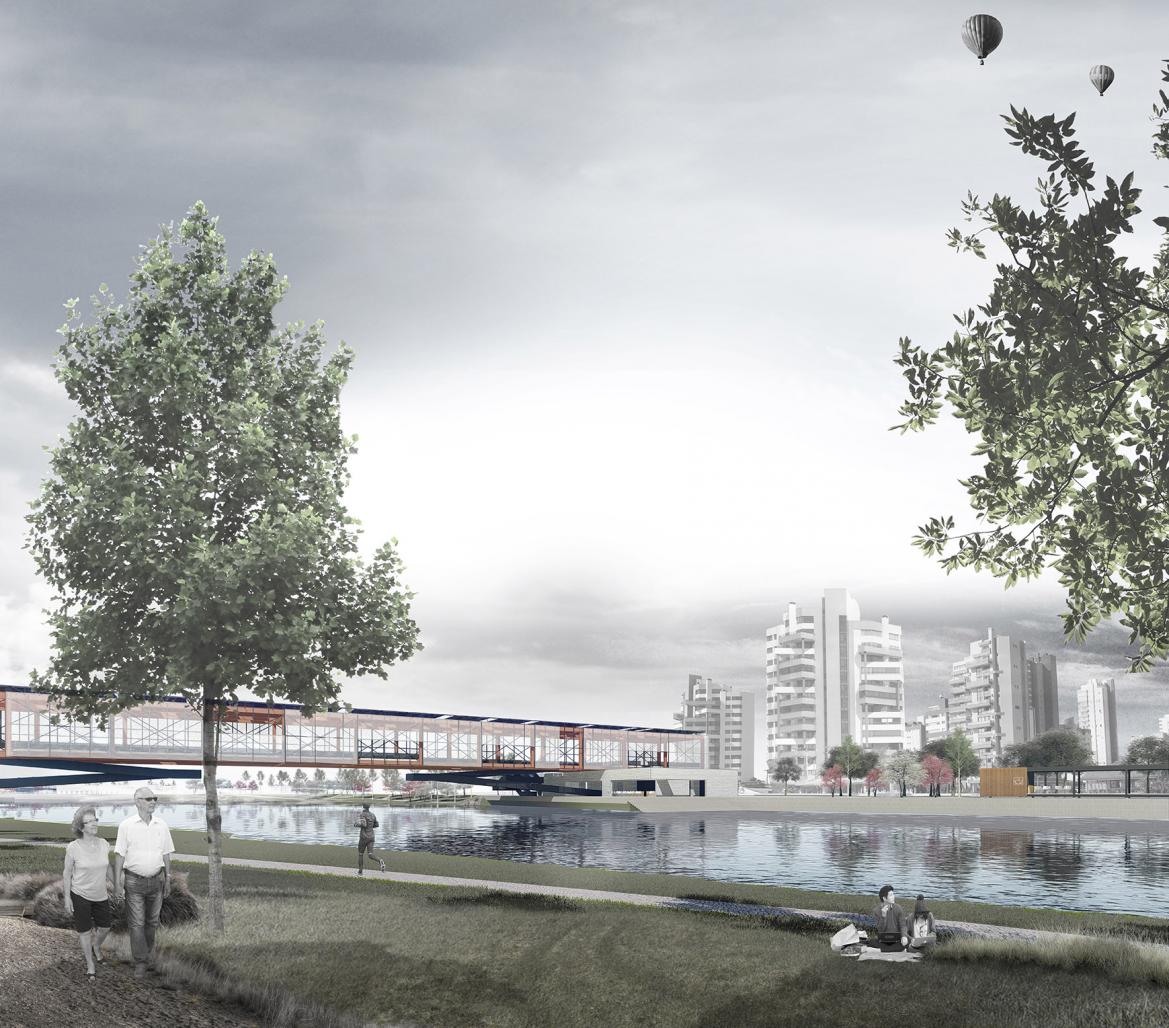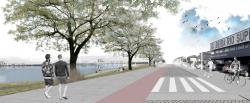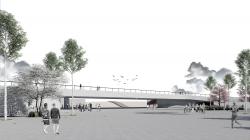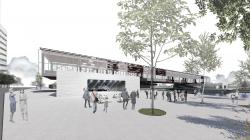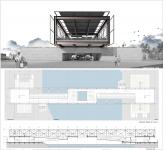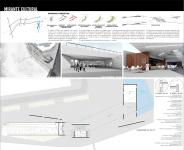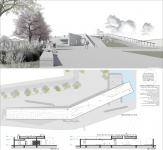This undergraduate thesis focused in explore the re-urbanization of the Mampituba River waterfront as a way of recovering its value for the city and its integration with the urban context of the region. The choice of the work area was made by an analysis of the border cities of Torres (Rio Grande Do Sul, Brazil) and Passo de Torres (Santa Catarina, Brazil) with the objective of clarify the historical context of each city while understanding the relationship between them.
The course of the Mampituba River is characterized by its sinuosity, resulting in a unique natural landscape, until draining into the Atlantic Ocean. However, when the river meets the urban area of Torres and Passo de Torres, its border becomes inaccessible to the people. Either this occurs because of irregular occupations, which deprive public access, or because of a lack of adequate public infrastructure that could allow the use of waterfront for leisure, contemplation or fishing activities.
O Parque // The Park
The challenges of this part of the project are: to stimulate even more the landscape and tourism potential of the place; to promote dynamic places that adapt to the different seasonal demands; to overcome the problems generated by its irregular occupation that it has, as one of the main aggravating pollutants, the release of untreated sewage into the river.
For this project, the development of two socio-cultural anchors has as main urban strategy the valorization of the border of the Mampituba River, creating the Mampituba Park. In addition to the new public squares and green areas, commercial and cultural modules will be distributed along the banks of the river as a way to guarantee the vitality and the dissemination of recreational and cultural spaces. Therefore, the river becomes the main actor in the urban landscape.
RIVER HEALTH
The Local Management Committee of the Mampituba River Hydographic Basin (Comitê Local de Gerenciamento da Bacia Hidrográfica do Rio Mampituba), created in 2012, seeks solutions to address the main causes of the river pollution. One of these factors is the lack of basic sanitation. Occupancies that have occurred irregularly along the riverside cause a high level of pollution due the irregular sewage disposal into the river waters, making them unfit for bathing (FEPAM, 2013), that since 2002 when they had the first analyzes of the water to this day, there were still no improvements.
As a strategy for the recovery of the river will be adopted measures that contribute significantly, such as: the removal of occupations near the riverside; the recovery and creation of green areas; deployment of native aquatic vegetation that assists in the river depollution (Salvinia auriculata, Lemna aequinoctialis, Cyperus papyrus and Typha domingensis) and also the development of the sewage collection and treatment systems of the riverside buildings.
Cultural activities will be implemented along the shore and together with the local schools, so that awareness of the importance of environmental preservation is gradually established by narrowing the relationships between people and the river
Reencounter with the water
To propose a scenario of integration of the river into its urban parcel as a form of territorial and structural transformation of the surroundings solving social and environmental problems generated by an aggressive urbanization, and having as main objective to improve the conditions of the border and the quality of life of the inhabitants. As the main design concept, the river must be understood as a whole, and not only as a part belonging to two different states. Adopting this understanding, the concept aims to foster the connection of the two cities by proposing a needs program that promotes activities that intensify the transition of the inhabitants of one city to the other.
Strategies and design guidelines:
- Recover the water’s health of the Mampituba River
- Allow and guarantee access to the entire river;
- Take the river part of the culture;
- Create quality public spaces;
- Generate jobs and income with the intensification of tourism;
METHODOLOGY
The re-urbanization of the waterfront starts with the analysis of land occupation, uses, existing flows, community desires, problems and their causes, agents involved and the development of the public-private partnership and cultural anchors to attract real estate capital necessary to enable the project.
RIVERSIDE ANALYSIS
The collected data shows that both cities have very low levels of urban infrastructure and accessibility to the river. Passo de Torres presents 45% of the margins with private areas and less than 1% of the total with minimum infrastructure level for public use. In the city of Torres there is 10% of private area and 2% with public space directed to the use of the population. Even with such low levels of urban infrastructure, the waterfront has its continuous use throughout the year.
The project proposal of Mampituba Park has as guiding concept the meaning that the river should be understood as an integrating element of two cities and not just as a border. Therefore, the project tried to intensify the transition of the population between the two cities defining uses and programs and where it should be located. As a scope for this work, besides the redevelopment of the waterfront, is the construction of two anchor buildings: The Cultural Platform and the Cultural Viewpoint.
2017
0000
Academic: Gabriel Henrique Cazuiuqui Brun
Professor: Marta Floriani Volkmer
